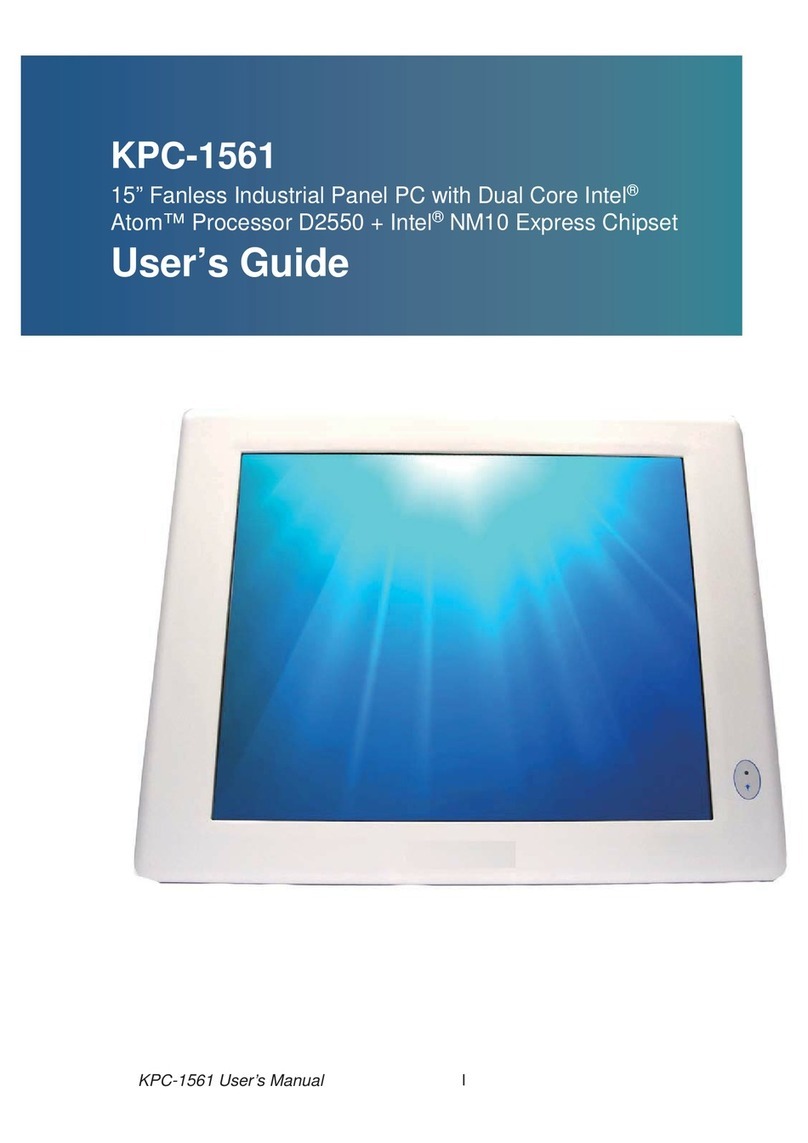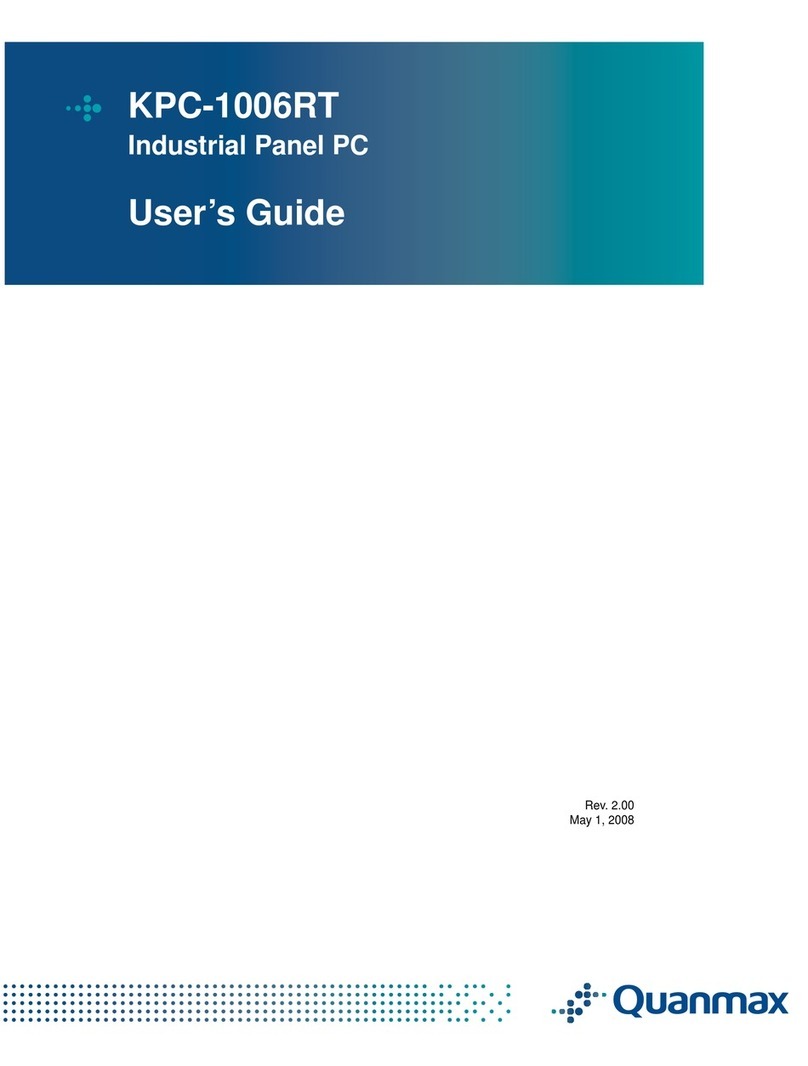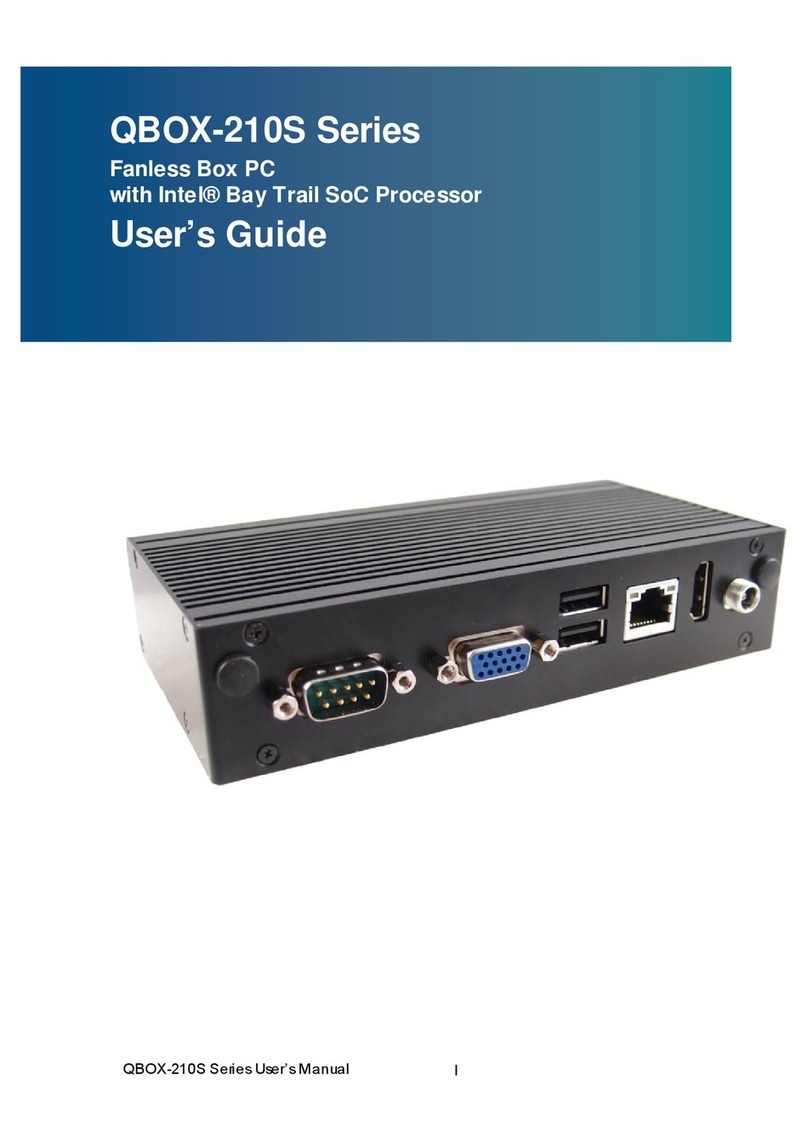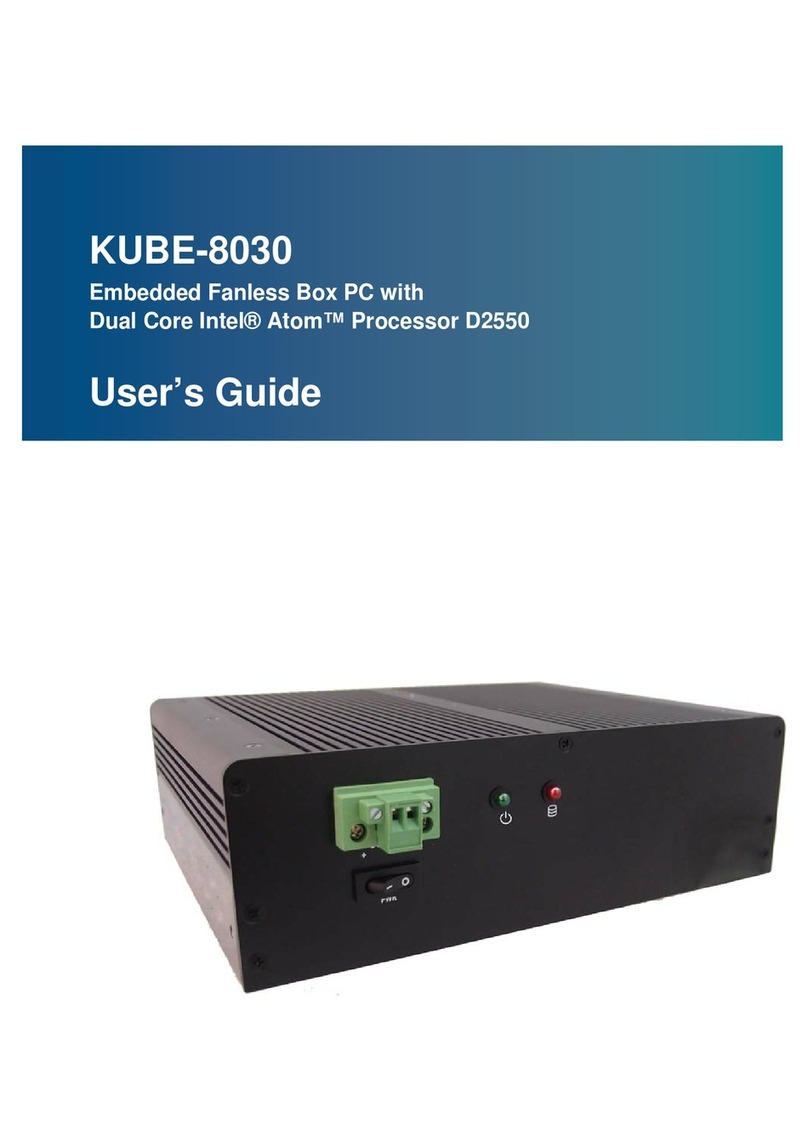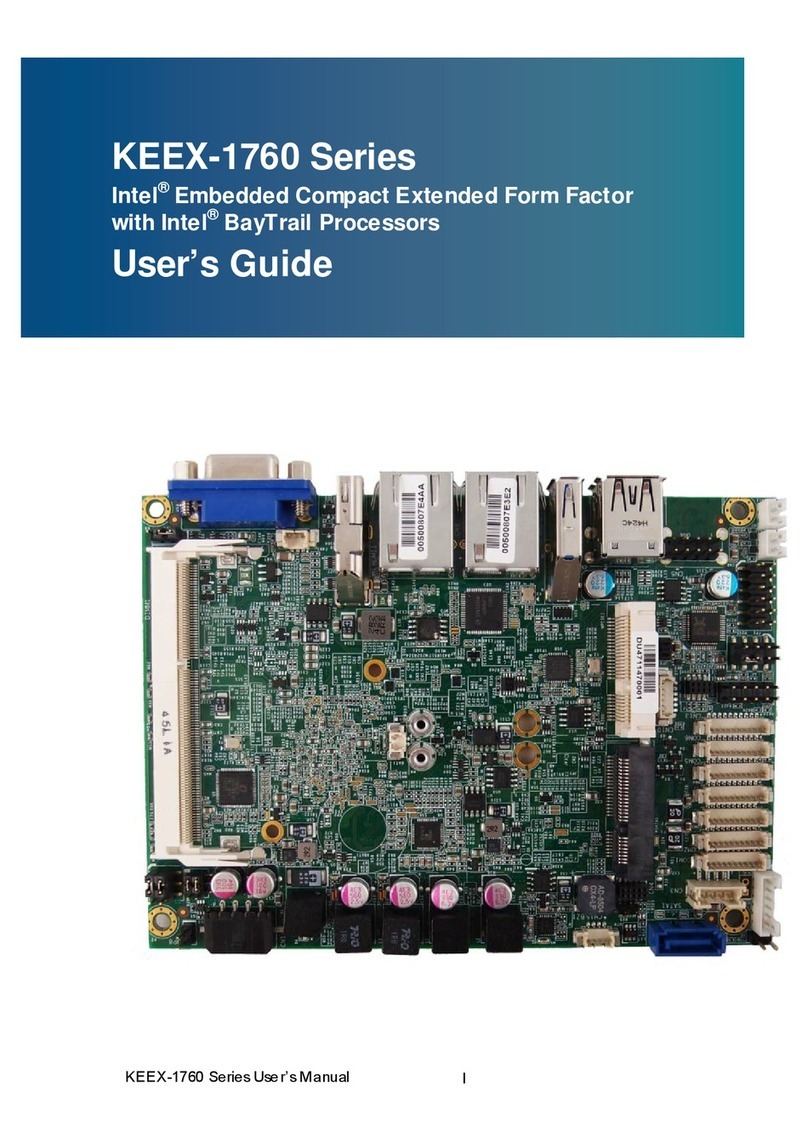
Content
3
KEEX-5100 Series User’s Manual
Content
Content.......................................................................................................................3
Figures.......................................................................................................................5
Tables.........................................................................................................................6
Safety Instructions......................................................................................................8
Before You Begin.........................................................................................8
When Working Inside a Computer...............................................................8
Preventing Electrostatic Discharge..............................................................9
Preface..................................................................................................................... 11
How to Use This Guide.............................................................................. 11
Unpacking.................................................................................................. 11
Regulatory Compliance Statements .......................................................... 11
Warranty Policy .........................................................................................12
Maintaining Your Computer .......................................................................13
Chapter 1 Introduction...........................................................................................16
Overview ...................................................................................................16
Product Specifications...............................................................................17
System Block Diagram..............................................................................18
Mechanical Dimensions.............................................................................19
Chapter 2 Hardware Settings ................................................................................20
Overview ...................................................................................................20
Jumper Settings and Pin Definitions..........................................................21
Jumper Settings ......................................................................................22
Internal Connector PinAssignment.........................................................24
Rear Panel Pin Assignments...................................................................31
Chapter 3 System Installation................................................................................34
Memory Module Installation.......................................................................34
Chapter 4 AMI BIOS Setup....................................................................................36
Overview ...................................................................................................36
Main Menu.................................................................................................37
Advanced Menu.........................................................................................38
Boot Menu.................................................................................................49
Security Menu............................................................................................50
Save & Exit Menu......................................................................................50
Chapter 5 Driver Installation..................................................................................52






